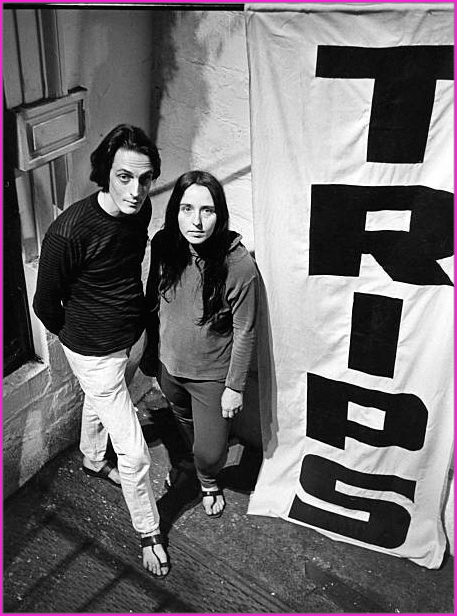Theatre Of Light |
Personnel: Rudolph George Stern (November 30, 1936 – August 15, 2006) RIP n the Beginning, the story goes, the Lord looked down from the heavens and said, "Let there be Light."
Theater of Light consists mainly of a psychedelic panoply of shapes and colors, projected onto a triad of rotating circular screens. There is one larger screen at the back of the stage, and a trio of puppeteers sometimes enters the picture, casting shadows that enact an abstract story, or at least a sequence of events. Stern is working on a light-show adaptation of Herman Hesse's Steppenwolf, vague hints of which can be detected here and there; but Theater of Light is a work in progress, which Stern plans to change continually during its stay at the Flamboyan. The show is unquestionably a labor of love as well as artistry. Stern has genuine counter-cultural credentials, having created events in the Sixties for such icons as Timothy Leary and the Doors. Not for him the short-cuts of digital imaging; the thousands of slides used in Theater of Light have all been painted by hand, though a computerized lighting board coordinates their rigorously timed, rapid-fire deployment from dozens of projectors. Many of the slides are fascinating on their own, and together they are frequently dazzling. Stern's whirling, swirling spectrum is not just gorgeous: it is capable of inspiring genuine awe. The inevitable question, of course, is whether Theater of Light is theater at all. Stern's projections are "dramatic"they make a strong impressionbut the show has no characters, no narrative, no "arc" but the rainbow. Yet Theater of Light would lose much of its power without the focus that the theatrical setting elicits from its audience. Stern has timed his slides to the rhythms and moods of the music he has chosen to accompany them, which ranges from African drumming to Indian raga, with detours into Mozart and Donovan. The way the images build on the music is essential to their power. Like Basil Twist's 1998 smash Symphonie Fantastique, Theater of Light redefines theater as a state of mind. In that spirit: theater reviews don't make a habit of pushing recreational drugs, but in this case perhaps an exception can be made, because the manifold pleasures Theater of Light offers to the lucid would surely be magnified for the zonked. Like Symphonie Fantastique, or in simpler days the planetarium laser show, it should find a following of mind-expanded adventurers, trouping ecstatically to the Lower East Side and hoping to see the light. They won't be disappointed: Theater of Light is worth the trip. Submitted 2001 |
 |
Rudi Stern and Jackie Cassen, 1966 |
